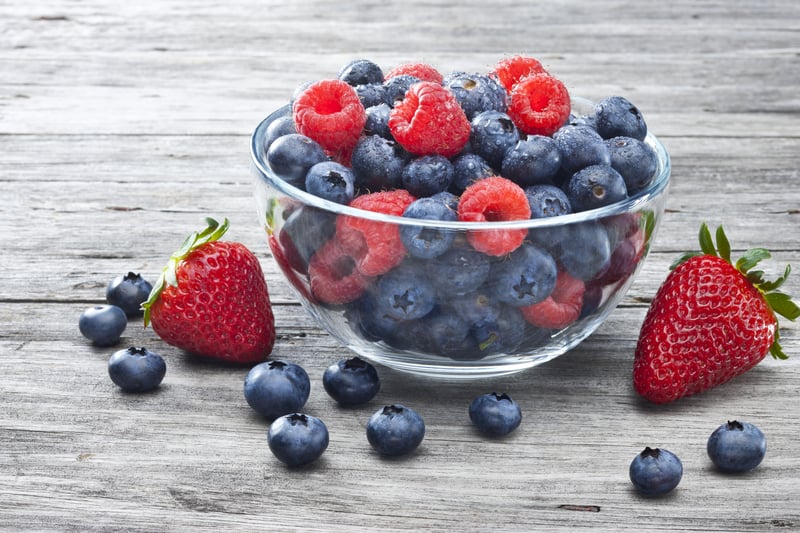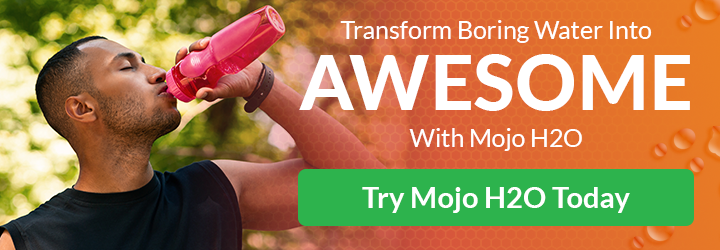14+ Hydrating Foods to Eat This Summer

Now that it’s getting hotter and possibly more humid (depending on where you live), it can be more difficult to stay hydrated. Even if you keep your water bottle close at hand, do you find it challenging to quench your thirst? Surprisingly, what you drink isn’t the only way to hydrate. These hydrating foods have a high water content to help your body stay hydrated while also providing healthful nutrients.
Staying properly hydrated is important as it helps you maintain cognition, manage weight, and even reduce the risk of kidney stones and other health issues. According to the National Academies of Science, Engineering, and Medicine, it’s suggested that women get ~2.7 liters of water per day and men get ~3.7 liters per day from both beverages and foods. However, it also varies depending on weight, activity level, and health status.
Top 14+ Hydrating Foods
1. Cucumbers
Cucumbers contain up to 95% water. Plus, they provide anti-inflammatory compounds to help support improved health. Cucumbers aren’t just for salads. They also make a great alternative to chips for enjoying fun summer dips or hummus.
2. Celery
Celery is another food with up to 95% water along with a good amount of potassium and sodium. These electrolytes help properly hydrate the body by directing water to the areas the body needs them most. As a bonus, celery is also low in calories yet high in other nutrients, including vitamin K, folate, vitamin C, calcium, and magnesium. You can juice celery or enjoy it raw, perhaps with a dab of peanut butter.
3. Lettuce
You may have heard that it’s not worth it to bother with iceberg lettuce as it doesn’t provide nearly as many nutrients as other greens. But when it comes to a summer salad, iceberg is a wonderfully hydrating base as it is also 95% water. To boost the benefits, you can also combine it with other greens like spinach and kale. Iceberg lettuce is also perfect for lettuce wraps or even to replace a hamburger bun.
If you are looking for lettuce that’s more nutrient-dense, romaine isn’t that much lower when it comes to water content, boasting just over 93%. Plus, it provides higher amounts of vitamins A, C, and K, folate, and fiber.
4. Zucchini
Zucchini is a perfect summer squash for hot, humid weather. Another hydrating food, this vegetable is almost 95% water. And it packs in a big dose of antioxidants, including beta-carotene, lutein, and zeaxanthin.
Zoodles are one popular way to eat more zucchini, but it’s also delicious when sliced and added to a salad or grated into zucchini bread.
5. Tomatoes
Tomatoes are not only rich in the antioxidant lycopene, but they’re also a great source of potassium. What’s more, they’re about 94% water. Plus, they’re so versatile and can be added to salads, pasta sauce (or gravy), soups and stews, chili, salsa, gazpacho, or perhaps best of all, enjoyed fresh when plucked right out of the garden.
6. Bell Peppers
Another food that’s best right from the garden (or farmers’ market) includes bell peppers. No matter which color you prefer, bell peppers have a high water percentage—around 94%. They work well in salads, as crunchy vehicles for summer dips, in salsas, and so much more.
7. Cauliflower
Another popular and highly versatile vegetable good for increasing hydration is cauliflower. In fact, cauliflower is nearly as high in water by weight as zucchini at 92%. Plus, it’s rich in vitamins C and K as well as other nutrients.
Another cruciferous vegetable with an admirable water content is broccoli (91%). It’s also a great way to get phytonutrients, antioxidants, fiber, vitamins, and minerals.
8. Watermelon
With water literally in the name, you’d expect watermelon to be on the list of hydrating foods. And indeed, it contains just slightly less with ~91% water in the juicy, sweet flesh. In addition, watermelon is also high in lycopene, which helps naturally protect against sun damage, support skin health, and reduce oxidative cell damage, and potentially reduce the risk of heart disease and diabetes.
Watermelon’s also a good source of fiber, vitamins C and A, as well as the mineral magnesium. It’s also low in calories with just 46 per cup. It makes for a refreshing summer salad when combined with arugula, mint, avocado, or even feta cheese.
9. Strawberries
Looking for a summer sweet that ranks on the list of hydrating foods? How about a big bowl of strawberries? Not only do they make a delicious dessert, but they’re also highly hydrating, containing 91% water, as well as being a great source of fiber, flavonoids, vitamin C, folate, and other nutrients. Eating strawberries regularly may also help support healthy levels of inflammation in the body to help protect against diabetes, heart disease, and other health issues.
Try combining strawberries with basil, dipping the fruit in melted dark chocolate, as a topping on a smoothie bowl, or chia seed pudding for a fun change of pace.
Other water-containing berries include blackberries (88%), raspberries (87%), and blueberries (85%).
10. Spinach
Spinach is another leafy green packed with nutrition, fiber, and water (just over 91%) along with magnesium, calcium, iron, potassium, vitamins A and K, and folate. It’s great in salads, blends well in smoothies, and is a delicious addition to soups and stews.
BREAKING: Forget Taking Collagen, Try This 21-Second Trick for Healthier Skin & Hair Instead
11. Cantaloupe
Another melon that makes the list of hydrating foods is cantaloupe. At around 90% water, you’ll get about a half cup of water per serving along with fiber and vitamin A. The high fiber content may also help you feel fuller, which may help you manage your weight. Plus, cantaloupe is a good source of the electrolyte potassium. Don’t just save cantaloupe for breakfast. It also goes well in mixed fruit salads, smoothies, or paired with prosciutto (a thinly cut ham) for a sweet and savory appetizer.
12. Grapefruit
While the grapefruit diet may not be all it’s cracked up to be, grapefruit is a low-calorie, nutrient-rich, high-fiber food that’s also a great source of water. In fact, it’s also around 90% water. Plus, it’s high in vitamin C and has a touch of calcium, magnesium, and even protein.
13. Peaches
“Millions of peaches, peaches for me…” Uh, sorry. Peaches are another highly hydrating food with 89% water content along with vitamins A, C, and B. They’re also rich in potassium and the disease-fighting antioxidant chlorogenic acid. A medium peach has a mere 60 calories, but with its healthy water and fiber content, it can fill you up and pairs perfectly with smoothies, yogurts, salads, or cottage cheese.
14. Soups
One of the best ways to consume more water in the summer is to enjoy soups, which are almost 100% water. While soups tend to be fall and winter favorites, summer soups can be refreshing, delicious, and filling. Gazpacho is perhaps the best known, whether it’s tomato or watermelon based, but other options include cantaloupe and yogurt soups or a French vichyssoise, which is a cold (or room temperature) leek and potato soup.
Staying hydrated when it’s hot and humid can be a challenge. To help avoid dehydration, make sure you’re drinking plenty of water as well as consuming hydrating foods like those mentioned above.
One way to keep an eye on your hydration levels is to watch the color of your urine. If you’re hydrated, your urine can range from pale yellow to a light yellow (almost lemonade) color. If the color looks darker, then it’s a clear sign you may be dehydrated.
Another way is to keep an eye on your skin. If you pinch the back of your hand and the skin returns right away to its normal state, you’re typically good. If it’s slow to return to normal, it’s a sign of dehydration.
To stay hydrated, it’s also a good idea to limit or avoid dehydrating beverages like caffeine, alcohol, and high-sugar sodas.




 7 Signs Your Body is Seriously Low on Collagen (not just wrinkles)
7 Signs Your Body is Seriously Low on Collagen (not just wrinkles) Health Expert: "Turmeric Doesn't Work (unless...)"
Health Expert: "Turmeric Doesn't Work (unless...)" 3 Warning Signs Your Probiotic Supplement is a Total Waste
3 Warning Signs Your Probiotic Supplement is a Total Waste

